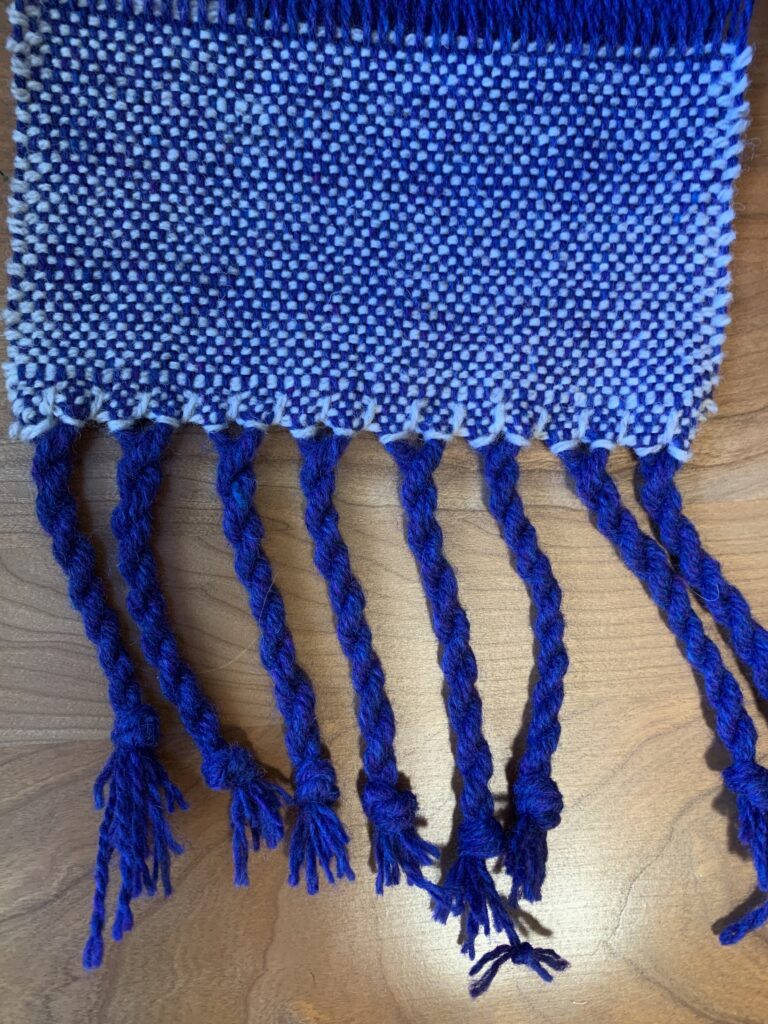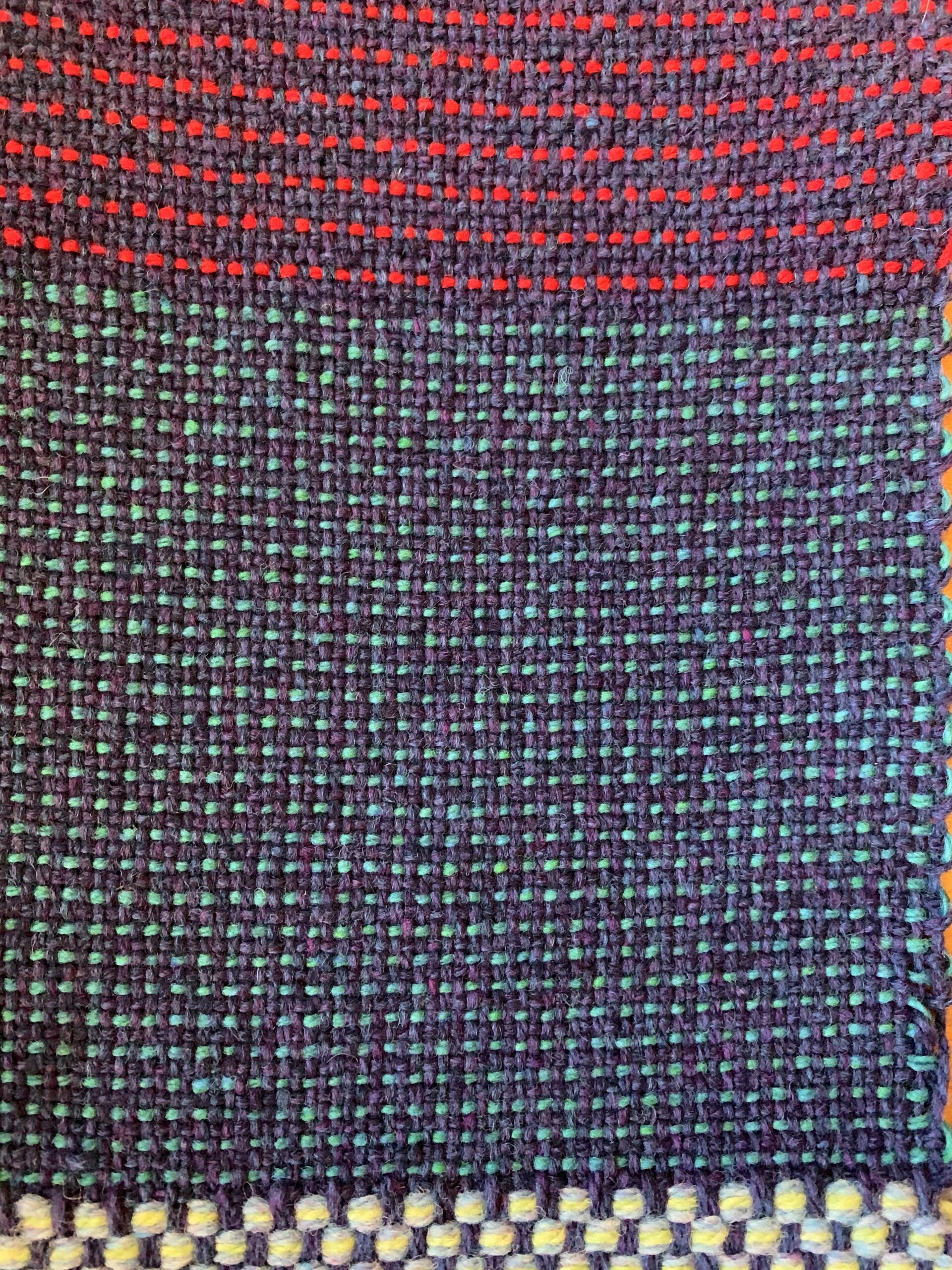This summer I was lucky to participate in the MidAtlantic Fiber Association biennial conference. Like so many conferences these days, it was presented online. That didn’t diminish the talent or interest of the students. In fact, it seemed that even more than usual were interested in attending and I had to increase the number of students able to attend. There was enough interaction that attendance did need to be limited, but since we weren’t constrained by space, we could accommodate more people than we usually can.
I found that there are many advantages to presenting online. I showed videos and narrated them as I went. When students had a question, I could replay the pertinent part of the video. The general consensus was that students could see much better using that format versus trying to fit a dozen people around one loom during an in-person demonstration. My presentations were recorded and attendees had access to the recorded sessions on the conference platform for a few weeks after the class. During that period, they could come back as many times as they needed and view the lecture and videos. They also had my email and I corresponded with students as they showed me their progress and asked questions after the conference.
The students did not have to haul around their looms. The daunting task of loading and unloading looms at each end of a conference is challenging. New weavers could work in their own spaces with their own equipment. If they needed to take more time than usually allotted in a weekend conference, they could. The students didn’t have to pay for travel, either. Hotel stays, meals and travel expenses can cost more than the conference fees, so online teaching makes learning weaving accessible to more people.
Of course there were some disadvantages to teaching online. I couldn’t see what the students were doing as they wove. Usually I walk around the room and can see problems as they develop. In person, I can catch mistakes in the early stages when they are still correctable. Neither could I read the body language of the students, so I couldn’t see when they were getting frustrated or when they weren’t comprehending the material. Mostly I found, though, that people spoke up and questioned as soon as they felt left behind.
Our new reality means that teaching virtually is here to stay. I’m glad I have had the opportunity to develop online teaching skills and I hope to become better at it. I anticipate that there will soon be another opportunity to teach beginning weaving online.




Exploring Twill 
More Twill Explorations 
Two Layers 
Broken Twill 
Color & Weave Effect 
Playing With Treadling
